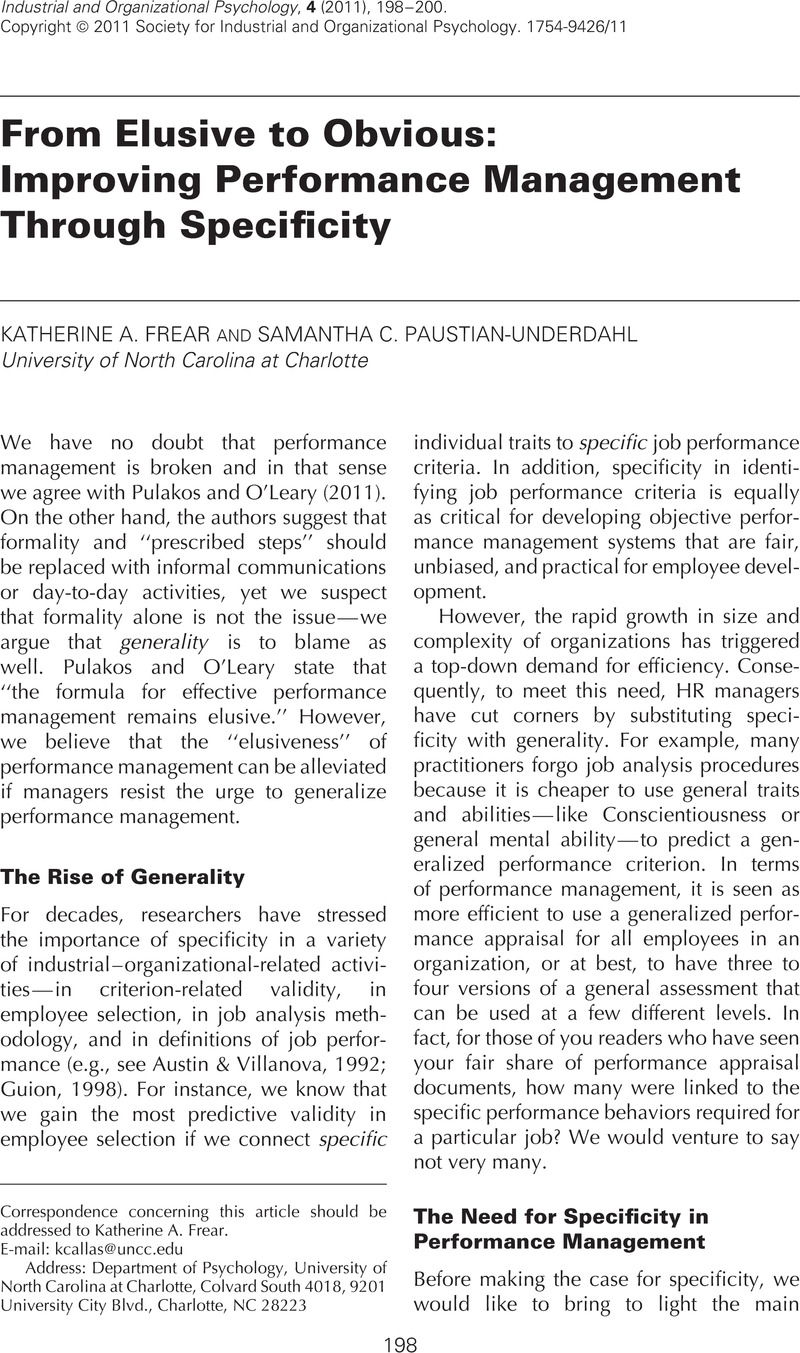Crossref Citations
This article has been cited by the following publications. This list is generated based on data provided by Crossref.
O’LEARY, RYAN S.
and
PULAKOS, ELAINE D.
2011.
Managing Performance Through the Manager-Employee Relationship.
Industrial and Organizational Psychology,
Vol. 4,
Issue. 2,
p.
208.
O’Leary, Ryan S.
and
Pulakos, Elaine D.
2011.
Managing Performance Through the Manager–Employee Relationship.
Industrial and Organizational Psychology,
Vol. 4,
Issue. 2,
p.
208.
Walton, Gregory M.
Murphy, Mary C.
and
Ryan, Ann Marie
2015.
Stereotype Threat in Organizations: Implications for Equity and Performance.
Annual Review of Organizational Psychology and Organizational Behavior,
Vol. 2,
Issue. 1,
p.
523.
Mazambani, Last
and
Mutambara, Emmanuel
2017.
Downside of corporate performance management practices in low-income markets.
Journal of Governance and Regulation,
Vol. 6,
Issue. 4,
p.
69.
Levy, Paul E.
Tseng, Steven T.
Rosen, Christopher C.
and
Lueke, Sarah B.
2017.
Research in Personnel and Human Resources Management.
Vol. 35,
Issue. ,
p.
155.



